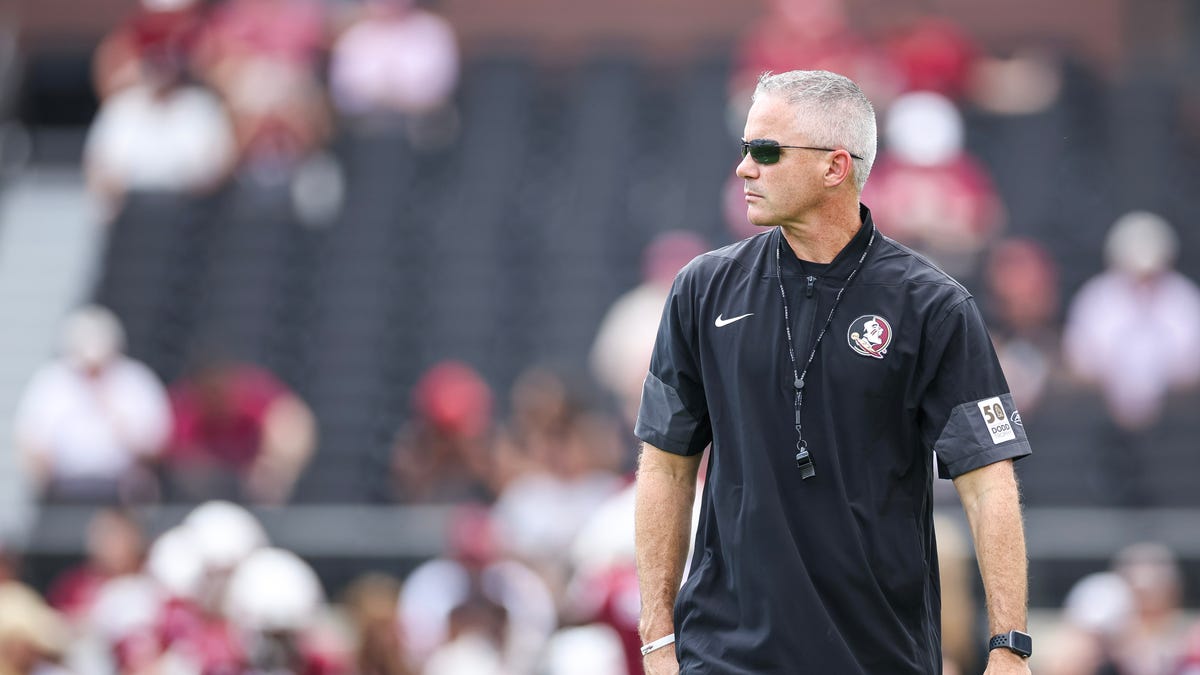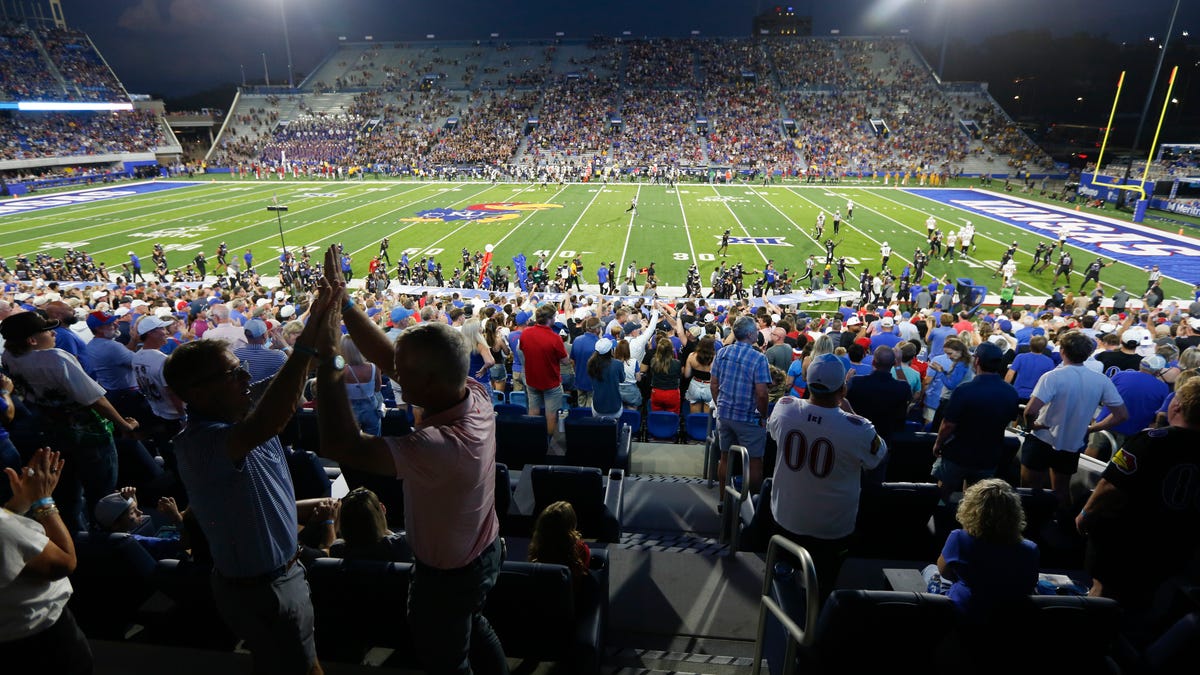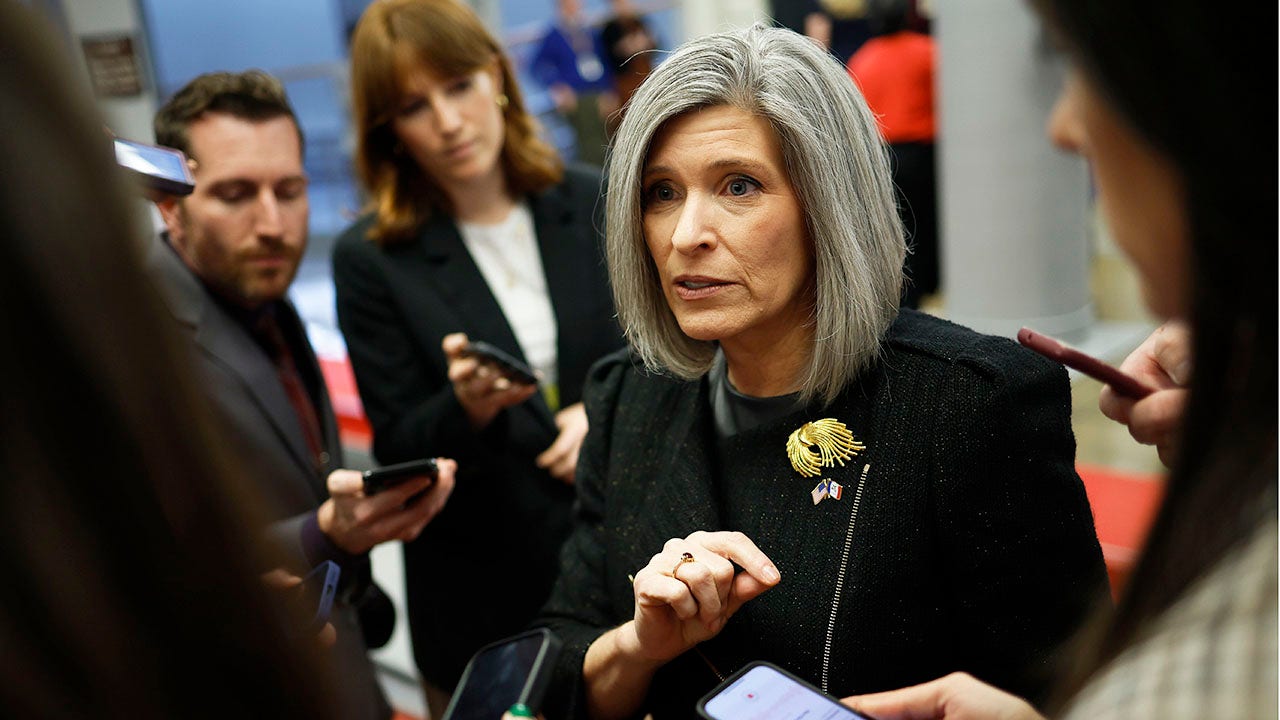Connecticut
Former CT school principal takes leap of faith, finds slice of paradise at island school off coast

FISHERS ISLAND, N.Y. — At age 22, Christian Arsenault found himself in a classroom at Hartford Public High School teaching social studies — something he wasn’t expecting to do after graduating from UConn.
A few years later, he found himself building a school from scratch as the principal of Capital Community College Magnet Academy in Hartford.
In both situations, Arsenault took a leap of faith. Why not become a teacher through the Teach for America program when it was something he had never thought of until his senior year at UConn? Why not become a principal and help start a new school at age 27?
But of all the ways his career twisted and turned, he never thought he would wind up on a small island off the coast of Connecticut as the principal and superintendent of a K-12 school with a total of 57 students.
Neither did his wife Beth, who had to approve the move (with their two kids) from their home in Middlebury to Fishers Island, seven miles long by 1½ miles wide, accessible only by ferry or boat.
“I kept falling into these situations,” Arsenault said last week, which was the final week of school before summer vacation. “My wife gets all the credit. Every time I got one of these ideas, I would say, ‘I just had this conversation about this,’ and she’d go, ‘Oh no.’”
But Beth liked the idea. She came to the island on a chilly foggy day in May 2017. There was a tour of the school, the Principal’s House, which the school district rents for school staff, and the island.
As they left on the ferry, the sun came out. Christian looked at her and said, “Sooo…?”
“Let’s do it,” Beth replied.
“I was reluctant even though I was excited for this unique opportunity,” Beth said. “I just kind of thought this is the closest I’m ever going to come to living on a beach. We’re not millionaires; it will never happen otherwise.”
Now Beth — who had never driven a boat before and was going to school to become a radiology technician — is the manager of the yacht club. Christian is the principal and superintendent of Fishers Island School, where their two boys will be in third and sixth grade in the fall.
“I give her all the credit in the world we’re still doing this,” Christian said. “We uprooted everything. We didn’t know what we were getting into.”
Finding opportunities
Arsenault was a UConn senior, majoring in history and political science, and was heading to law school because what else would he do with those majors?
“I was walking through the student union and there was a (Teach for America) table and the person said, ‘Hey, do you want to be a teacher?’” he said. “I said, ‘Sure.’ And I went and talked to them.”
He wanted to stay in Connecticut and was assigned to Hartford Public High in the fall of 2008. He spent five years there and loved it. But he was honest with himself and didn’t think he was the best teacher. He still wanted to work with kids and went for his counseling degree at Central Connecticut State University as he was still teaching and living in Middlebury.
Then an opportunity came up in the Hartford school system to become a school administrator through an alternative certification program.
“It was: ‘Hey, do you want to be a principal?’ ‘Yes, I do,’” he said. “I’m 26 years old. I go through this program. I had to convince my wife. It’s just Tuesdays, I’ll be gone until 11. Also on the weekends. But it’s just one year.
“I completely realized this is what I need to be doing. I can think about all the things I saw as a teacher that I liked and share them with people. I can prioritize what I believe is the most important part — the relationship with kids — and put those structures in place. It was discouraging sometimes because you felt like you were doing it in your classroom but it wasn’t happening in all places.”
He finished the program and the Hartford school system announced it would open the Capital Community Magnet Academy. Sixty-five families had signed up for the 11th- and 12th-grade school.
“But,” Arsenault said, “the school didn’t exist. I said, ‘I’ll do that.’
There were only two months before it opened. “I go July 1,” he said. “My wife is pregnant again. It’s all going to be fine. I put this big whiteboard. I have 60 days and I need to open a school. It was an empty space.
“There’s no staff. I don’t have a phone number. You need to send something on a letterhead to get it. I don’t have a letterhead. On the first day, I created the logo on Microsoft Paint so I could have a letterhead. That was Day 1. School uniforms, Day 2. Then I get to teachers. They said, ‘You need to meet with the families.’ I somehow convinced all of them to stay. This is going to work out, it’s going to be the greatest thing ever. I think I had one teacher hired. They stayed. It was the hardest year of my life. I did not take a day off from July 1 to Jan. 28 which is the day my son was born.”
Again, he loved it. But the commute from Middlebury was taking its toll. He never saw his family. He knew he had to make a choice. The choice was made for him when the school was scheduled to be closed after two years due to budget cuts.
That’s when he found Fishers Island.
Now, he walks to school every morning and back home to the Principal’s House every night. He sees his kids all day in school. And he’s home by 5 p.m. for dinner.

Everybody knows your name
The Fishers Island School was built in 1972. It serves the needs of 34 students who live on Fishers Island and 23 students who commute via ferry from New London each day. It is one of the smallest schools in New York State, although not the smallest.
Last Friday, four Fishers Island seniors graduated in a ceremony held at the town’s movie theater down the road from the school.
“I came here in the fall of 2019 for ninth grade,” said CJ Alexander, a senior from Groton who is headed to the University of Southern Maine in the fall. “In a big school, I felt overwhelmed by the pressure. I had a couple friends who went here. My mom looked into it and went to the open house. I did a full day of school here. Even though I didn’t know anybody, it felt like less pressure and less stress. I thought that would be good for me.
“I learned about how I learned as a student. Since classes are small, they take time to help students figure that out. And the amount of resources I’ve gained — I’m pretty independent.”
The Connecticut students, who pay approximately $3,800 in tuition, board the 7 a.m. ferry out of New London every day and come home on the 4:45 p.m. ferry.
The school offers a full New York State Regents curriculum. There are also four sports teams — boys and girls basketball, co-ed golf and cross country — and they play an independent schedule against teams from Connecticut and Rhode Island.
Because seventh through 12th graders are eligible to play, athletic director and physical education teacher Adam Baber has to make sure his games are scheduled so they can be competitive.
Baber coaches girls basketball, cross country and golf and is the assistant boys basketball coach. He schedules 12 to 14 girls and boys basketball games, six golf matches and six to eight cross country meets.
“I go through the CIAC website, look at the scores, try to make appropriate matchups,” Baber said last week. “It’s a pretty time-consuming process.
“There are no playoffs. You just play games, play for the love of playing. You’re not getting a Division I scholarship, you’re not going to win a state championship. But you get in there, you get to be with your friends. We do still have high expectations, and we expect them to approach games with a winning attitude.”

Junior Ben Edwards has played all sports at the school but gave up cross country last year. He said golf is his best sport but he’s played basketball since seventh grade.
“It’s difficult,” said Edwards, who grew up on the island. “Sometimes the physical aspect (of basketball) is hard. I think I’ve probably played every minute of every game since seventh grade. It’s difficult when you’re going against 18-year-olds and you’re 14, 15.
“It’s hard for our coach to decide to put in a seventh grader when one of us older kids needs a break so you stick it out.”
The teams also have to take the 12:45 p.m. ferry to the mainland for games so they have to make sure they’re up to date on schoolwork and what’s going on in their classes. They also have to remember everything — nobody’s mom is going to bring them their uniform or their basketball sneakers if they forget.
“There’s no turning that boat around,” said Baber, who lives in Ledyard.
About half the teachers live on the island in housing provided by the school system. The other half, like Baber, commute to work, either on the ferry or on a charter boat from Noank every morning.
Julie Arcelus has been the school’s guidance counselor for six years. She lives in Waterford. Her daughter Kat is an eighth grader at the school.
“The New London ferry is like our school bus,” Arcelus said. “I can get work done on the ferry. It’s like being on the train.”
The school isn’t for everybody. Some students don’t like the small classes. Some don’t like having the same teacher for two years in elementary school and the same teachers from seventh to 12th grade in different high school subjects. Some want to play sports.
“My kids go to elementary school (in Ledyard),” Baber said. “My daughter plays soccer. My daughter did (come here) when COVID first hit so we were on the same schedule. But now it’s easier scheduling-wise for her to stay there and we don’t have soccer here.”
Arcelus’ son just graduated from Waterford High where he played soccer and lacrosse. Her daughter played basketball at Fishers Island.
“Educationally, it was better for her, the small classrooms, knowing her teachers, them knowing her,” Arcelus said. “She wouldn’t be somebody playing basketball at Waterford, but she plays here. She didn’t know what she was doing at first, now she goes to basketball camp at Connecticut College.
“She gets involved in a lot of things and she probably wouldn’t be able to do that at a bigger school. It’s more of a commitment.”
The school is close-knit. The seniors see the kindergarteners in the hallways and say hi. Everybody knows everybody. It can make it difficult when conflicts arise, but everybody has to learn to work things out.
“At a normal public school, the seniors wouldn’t talk to the seventh graders ever or the elementary kids, but here, they all know me and they’re like, ‘CJ!’” Alexander said. “And they all want me to hang out with them, which is so sweet.
“I know not everyone gets to experience that and it teaches you levels of empathy and understanding because you’re dealing with younger kids who look up to you. Also the staff members — at a normal school — I was talking to my friends, they don’t talk to their teachers. Ever. I’m close with so many teachers here. That’s so good to be able to build connections, I know I’m still going to talk to them after I graduate.”
When Kat Arcelus celebrated her birthday for the first time at the school when she was in third grade, her mother figured she only needed to bring three or four cupcakes for her daughter’s classmates.
“I need 70 cupcakes,” Kat told her mother.
“She needed them for everyone,” Julie said, laughing.

The quiet life
On the Wednesday of the last week of school, it was an idyllic summer day, the kind of day that you think about living on an island. The elementary school kids had Beach Day, where they went to Dock Beach, the small public beach near the harbor. The water was cold, but they still went in.
The school was quiet. There were a few classes, as the high school students were finishing up finals. Some were shooting baskets in the gym.
The island is quiet, too, even in the summer. There are about 300 year-round residents. Part of the island is private, and a small part is owned by the U.S. Navy. There are a couple of restaurants open during the summer months, an ice cream shop, a liquor store and a grocery store.
This is not Block Island, where tourists are everywhere, partying at the oceanside bars and riding mopeds.
“Every dinner party, every outing, I get sucked into the corner and I’m telling the story of Fishers Island,” Arsenault said. “I get a group of people around me because they find it so interesting.
“The two months before I moved, trying to explain to family and friends and colleagues where I was going — they didn’t get it. I didn’t get it, either. I didn’t know where Fishers Island was and I grew up in Connecticut.”
Arsenault’s goal is to get 10 students per grade in seventh through 12th grade.
“For me, living out here, there’s a privacy I have to respect for people who live here,” he said. “But I’m also a leader of a school who wants more kids to come, to experience how awesome this is. It is truly unique.”

Connecticut
Human remains found at construction site in Greenwich

Police are investigating after finding human remains at a construction site in Greenwich last week.
The police department said that during a normal workday at a construction site in northern Greenwich, workers found what appeared to be human remains after soil was disturbed by an excavator.
The remains were carefully collected from the scene, and the Office of the Chief Medical Examiner took custody of the bones, police said.
Investigators said the remains appear to be of a considerable age.
Connecticut State Police is also assisting with the investigation.
Connecticut
A motorcyclist in Hebron is dead following crash

A motorcyclist in Hebron has died after a crash along Burnt Hill Road and Cone Road, state police said.
The Connecticut State Police responded to the accident at approximately 5:25 p.m. after a dirt bike struck a rocky embankment.
According to authorities, the operator of the motorcycle failed to negotiate an “S” shaped curves in the roadway before loosing control.
The victim was originally transported via LifeStar to the hospital with reported serious injuries, authorities said.
The driver was then later pronounced dead at Marlborough Middlesex Clinic, state police said.
Anyone who may have witnessed this accident, or who may have information is asked to contact the Connecticut State Police.
Connecticut
Driver rescued from crash in Wolcott, serious injuries reported

A driver was rescued from a crash in Wolcott early Saturday morning and serious injuries have been reported.
Officers received a report of an accident on Beach Road around 3 a.m. Once there, police said they found a vehicle had hit a tree.
An occupant of the home where the vehicle crashed pulled the driver out of the car before the car caught on fire, according to police.
The driver was transported to the hospital to be treated for very serious injuries.
No other occupants were in the vehicle at the time of the crash.
The crash remains under investigation by the Naugatuck Valley Regional Collision Reconstruction Team.
-

 Health1 week ago
Health1 week agoWho Makes Vaccine Policy Decisions in RFK Jr.’s Health Department?
-

 Finance4 days ago
Finance4 days agoReimagining Finance: Derek Kudsee on Coda’s AI-Powered Future
-

 Lifestyle1 week ago
Lifestyle1 week agoBobbi Brown doesn’t listen to men in suits about makeup : Wild Card with Rachel Martin
-

 Business1 week ago
Business1 week agoHow Nexstar’s Proposed TV Merger Is Tied to Jimmy Kimmel’s Suspension
-
North Dakota4 days ago
Board approves Brent Sanford as new ‘commissioner’ of North Dakota University System
-

 Technology3 days ago
Technology3 days agoThese earbuds include a tiny wired microphone you can hold
-

 Crypto3 days ago
Crypto3 days agoTexas brothers charged in cryptocurrency kidnapping, robbery in MN
-
World1 week ago
Russian jets enter Estonia's airspace in latest test for NATO



















